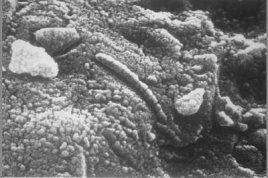

 When the Viking Landers were sent to Mars in the 1970s they found a cold desolate dry world that seemed unlikely to be able to support life. With such cold temperatures, a thin atmosphere and no sign of liquid water the chance of finding even some sort of microscopic life forms seemed remote. Tests performed by both Viking landers seemed to back this up. However with the advance of astrobiology in recent years it is worth taking another look at those experiments.
When the Viking Landers were sent to Mars in the 1970s they found a cold desolate dry world that seemed unlikely to be able to support life. With such cold temperatures, a thin atmosphere and no sign of liquid water the chance of finding even some sort of microscopic life forms seemed remote. Tests performed by both Viking landers seemed to back this up. However with the advance of astrobiology in recent years it is worth taking another look at those experiments.
Most scientists on the Viking mission believed the positive results were attributed to the discovery of oxides in the soil, and that a chemical reaction occured when the nutrient solution was mixed with the oxides. However, the LR's designer and principal investigator, Dr. Gilbert Levin, was convinced that his experiment found life.
Levin also says that the experiment which did not find organic materials in the soil were not sensitive enough to detect it in small amounts. This has been confirmed by NASA as possible. The experiment in question was tested in Antarctica and also found negative results, which was incorrect because there are organic materials there.
This does not prove that the Viking landers found evidence of life. It means that the tests conducted were unsatisfactory.
 In 1996 Nasa held a press conference to announce they had found evidence of microscopic life in a martian meteorite known as ALH84001. They had found what looked like fossilised bacteria as well as organic chemicals similar to those found when bacteria decay. However many scientists remain unconvinced and the argument still rages about whether these patterns were the result of contamination or are in fact non-living mineral structures.
In 1996 Nasa held a press conference to announce they had found evidence of microscopic life in a martian meteorite known as ALH84001. They had found what looked like fossilised bacteria as well as organic chemicals similar to those found when bacteria decay. However many scientists remain unconvinced and the argument still rages about whether these patterns were the result of contamination or are in fact non-living mineral structures.
Just as in the 70s when NASA was a bit premature in announcing that the Viking Landers had found no evidence of life on Mars, in 1996 they were premature in announcing that the meteorite ALH84001 contained proof of bacterial life on Mars.
Both experiments remain inconclusive.
Results from the Mars Global Explorer indicate that in the past Mars was a very different world. It would have had a denser atmosphere and running water on its surface. This would have made the planet more hospitable to life. The question is, if life did take root, could it have survived until the present day in the more hostile martian environment? We know there are organisms on our planet deep in the earth's crust that can exist on hydrogen and carbon dioxide. Could similar organisms be sheltering under the surface of Mars?
